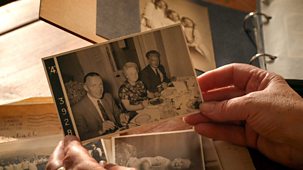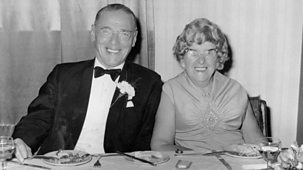
Series 1: Episode 2
Picking up the story as the case comes to trial, this episode examines how the true scale of Shipman’s crimes began to emerge and how his murders conformed to a chilling pattern: his victims were mostly elderly patients, the vast majority were killed in their own homes, and Shipman certified their deaths as due to natural causes. Could it be that the fear of hospitals amongst this group of patients and their families’ desire for their elderly relatives to have a ‘good death’ enabled Shipman to murder again and again in plain sight for nearly 30 years?\n\nIn October 1999, Harold Shipman stood in the biggest murder trial in British history, but coverage of the trial, and in particular of Shipman’s victims, was peculiarly low key. Speaking to victims’ families, a journalist who covered the case and the victim support team leader, Chris Wilson discovers that the case had none of the usual hallmarks of a murder trial. This was a murder case in reverse – one that began with the killer and evolved around a search for his victims – and the trial retrospectively forced victims’ families to come to terms with their loved ones’ murders, years, sometimes decades, after they had believed they had died what one relative describes as a ‘millionaire’s death’.\n\nAlthough Shipman was convicted for 15 murders, the police investigated over 100 suspicious deaths. Wilson speaks to the family who, following the trial, led a successful campaign for a public inquiry that would examine all of Shipman’s crimes, ruling on every single death connected to Shipman throughout his time as a GP – a career that began in Todmorden, West Yorkshire, in 1974.\n \nBut while Shipman’s murders had passed without question at the time, Wilson discovers that his behaviour in Todmorden had come to the attention of the authorities. He meets a former drugs squad police officer who investigated Shipman in the 70s, discovering that the GP was addicted to pethidine, obtaining large quantities of the drug by befriending his elderly patients and forging prescriptions in their names. \n\nAt the time there was no suggestion of murder. But two decades later it would emerge that Shipman hadn’t just been grooming his elderly patients in Todmorden to feed his own habit - he had also used these drugs to kill some of them. Wilson meets the granddaughter of Shipman’s first victim in Todmorden, who describes in vivid detail how he killed her grandmother in her own bedroom while her grandfather made coffee in the kitchen.
Source: BBC 2
Most recent episodes of The Shipman Files: A Very British Crime Story
The Shipman Files: A Very British Crime Story
Series 1: Episode 3
This episode opens with the publication of the first report of the public inquiry into the deaths of Shipman’s patients - a report that officially concluded that, while wo ...
10-12-2021
BBC 2
The Shipman Files: A Very British Crime Story
Series 1: Episode 2
Picking up the story as the case comes to trial, this episode examines how the true scale of Shipman’s crimes began to emerge and how his murders conformed to a chilling p ...
03-12-2021
BBC 2
The Shipman Files: A Very British Crime Story
Series 1: Episode 1
Film-maker Chris Wilson revisits the Harold Shipman story as it developed from a local news piece to the biggest serial killer case in British History. \n \nOpening in 1998, the ...
26-11-2021
BBC 2
Most popular episodes of The Shipman Files: A Very British Crime Story
The Shipman Files: A Very British Crime Story
Series 1: Episode 3
This episode opens with the publication of the first report of the public inquiry into the deaths of Shipman’s patients - a report that officially concluded that, while wo ...
10-12-2021
BBC 2
The Shipman Files: A Very British Crime Story
Series 1: Episode 2
Picking up the story as the case comes to trial, this episode examines how the true scale of Shipman’s crimes began to emerge and how his murders conformed to a chilling p ...
03-12-2021
BBC 2
The Shipman Files: A Very British Crime Story
Series 1: Episode 1
Film-maker Chris Wilson revisits the Harold Shipman story as it developed from a local news piece to the biggest serial killer case in British History. \n \nOpening in 1998, the ...
26-11-2021
BBC 2



